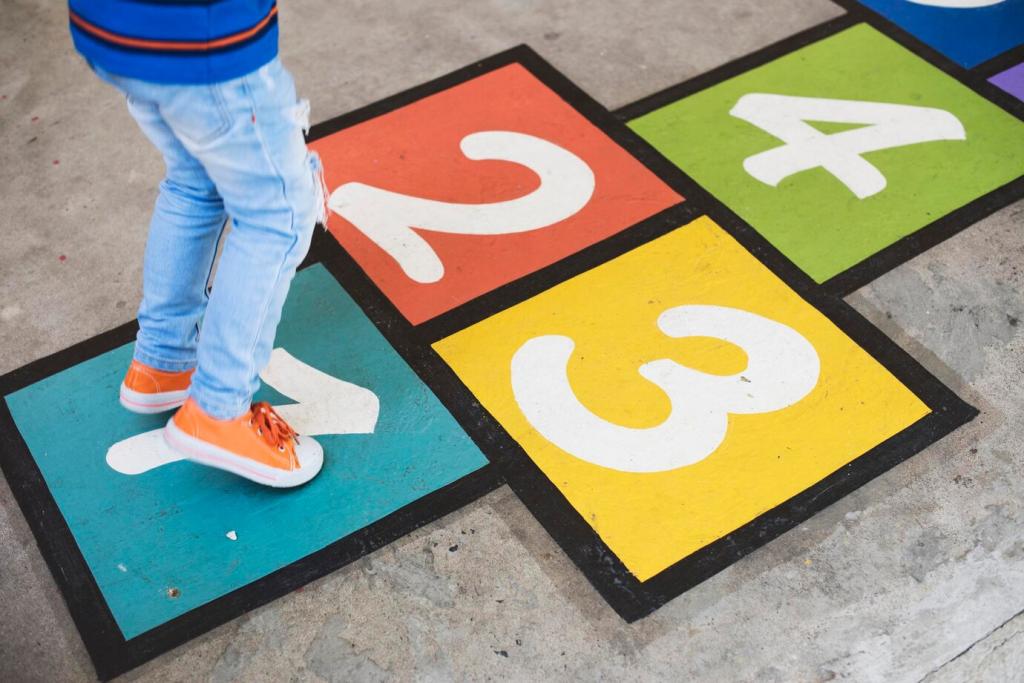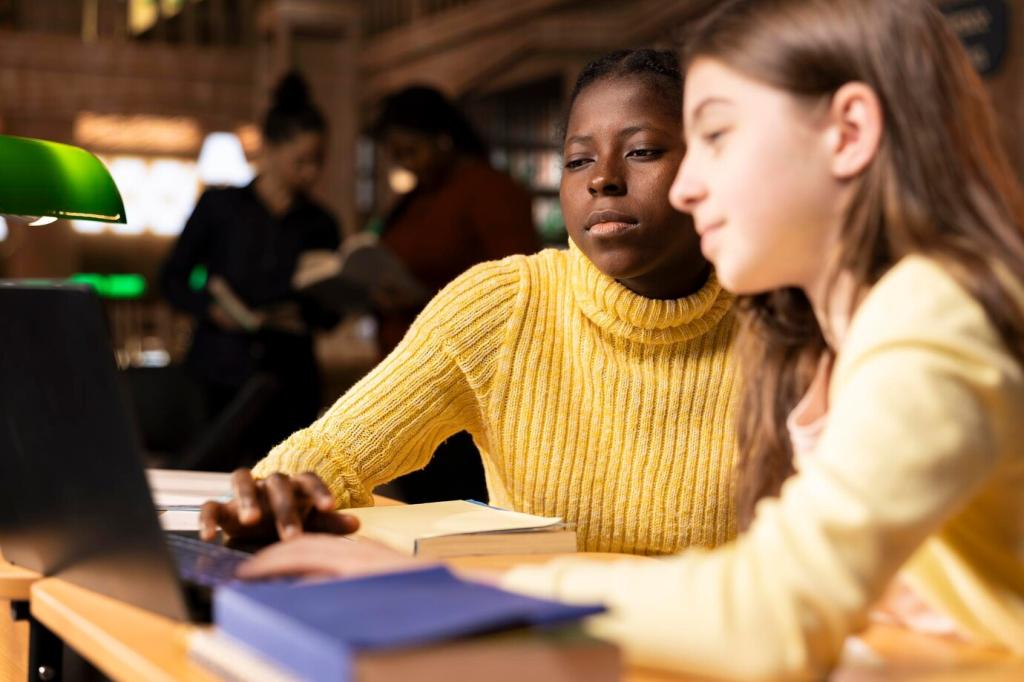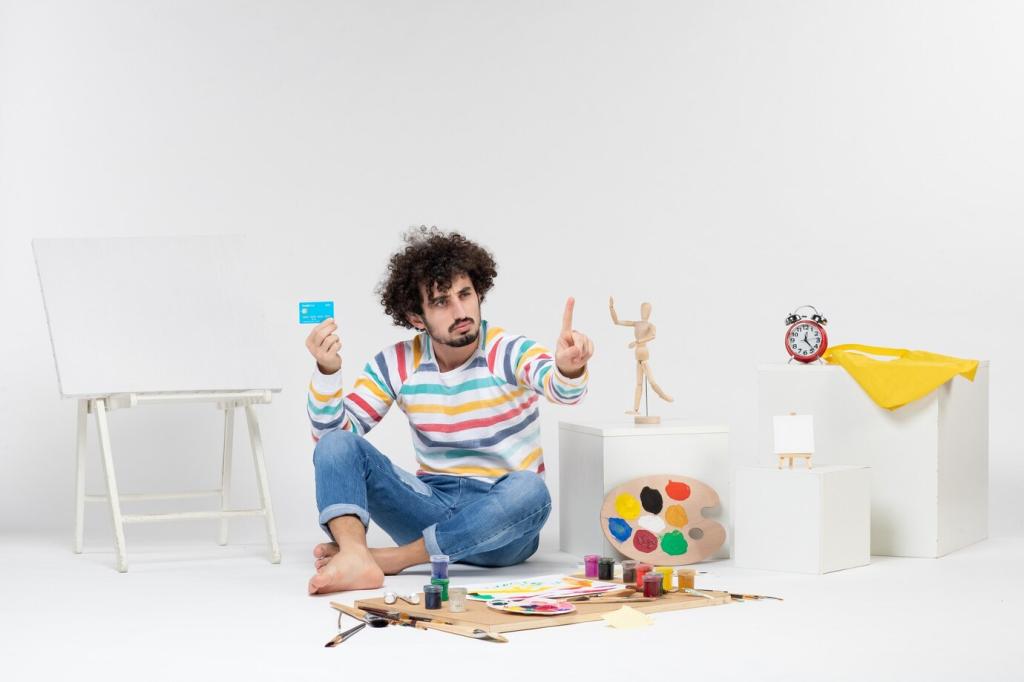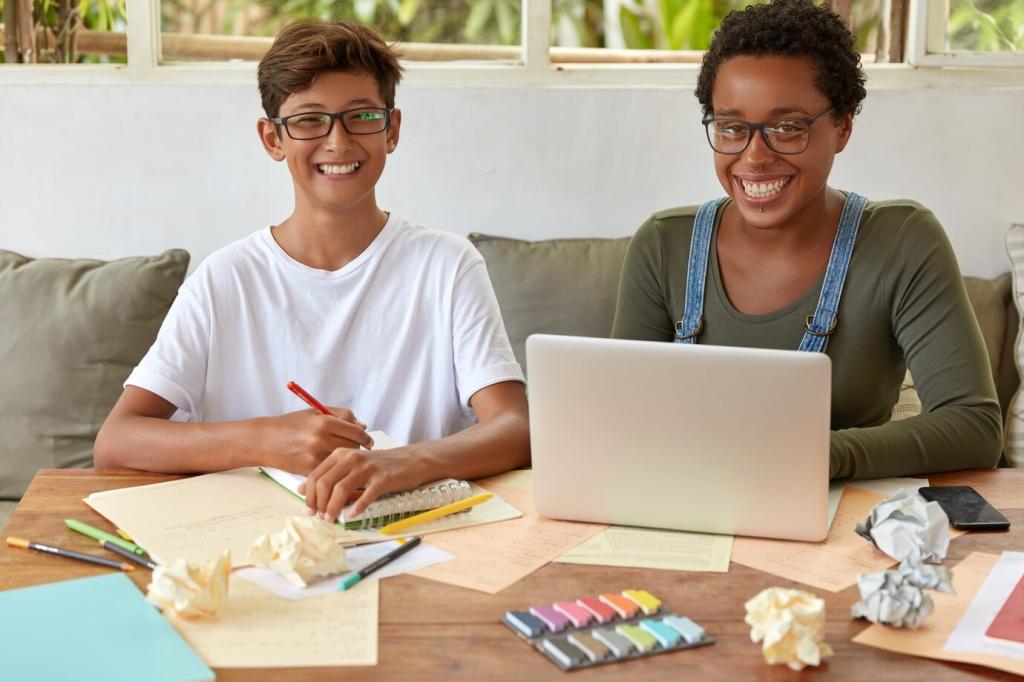Inclusive, Accessible Creative Learning
Offer tool choices—brushes, rollers, styluses—and quiet corners with noise-reducing options. Provide visual schedules and texture alternatives. Clear, chunked instructions support focus while preserving joyful experimentation and dignity for students who need predictable structure.
Inclusive, Accessible Creative Learning
Build multiple means of engagement, representation, and action: video demos, step cards, verbal modeling, and assistive grips. Let students choose formats for evidence—photo essays, diagrams, or prototypes—while targeting the same core learning goals.
Inclusive, Accessible Creative Learning
Invite family stories, community motifs, and multilingual labels. Spotlight artists from varied backgrounds. Students connect identity to content, producing art that teaches others while honoring histories. Share your favorite artists to feature in upcoming guides.








